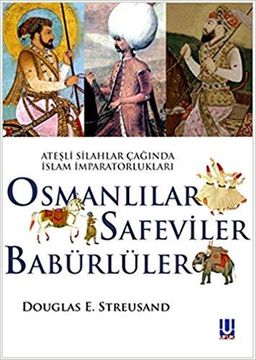About
Title:
Profesör, Yazar
Readers
1 readers liked.
1 readers read.
3 readers will read.
Quotes
In 1509, Uzbek forces raided Kirman, which was Safavid territory.
Shah Ismail sent two embassies to Shaybani Khan to dissuade him from expansion westward; Shaybani Khan responded by demanding that Ismail
accept Uzbek (Chingiz Khanid) suzerainty and return to the spiritual vocation of a Sufi. Ismail then led Safavid forces into Khurasan, met Shaybani Khan’s forces at Marv, and defeated them decisively on December 2, 1510.
Ismail emerged from his exile in Gilan in the summer of 1499, at the age of twelve. The disorders within the Aqquyunlu realm had continued during this period and prevented an immediate response to Ismail’s reappearance. He rapidly attracted a huge following, including seven major tribes: the Ustajlu, Shamlu, Takkelu, Varsaq, Rumlu, Zul Qadr, Afshar, and Qajar. These tribes formed the Qizilbash confederation. He led these forces against the old enemy of his family, the Shirvanshah, and by the end of 1500 had killed Farrukhyasar and subjugated the rich province he had ruled. The Safavid order had become a principality. In 1501, Ismail’s forces occupied Tabriz, the Aqquyunlu capital and the most important commercial center of western Iran. Ismail then defeated a series of Aqquyunlu princes.
After 1530, Ismail’s son, Shah Tahmasp, gradually strengthened his position enough to manipulate, rather than be manipulated by, the tribes. After his death, however, the tribal chiefs again dominated the empire until the time of Abbas I (1588–1629). Abbas transformed the Safavid polity from a tribal confederation into a bureaucratic empire. The primacy of the bureaucracy, with the tribes present but peripheral, survived until the rapid collapse of the empire in 1722.
Çaldıran Savaşı ile Safevi Yayılmacılığının Durması
The defeat at Chaldiran ended the first phase of Safavid history. Geographically, the Safavids lost only the province of Diyar Bakr, but the momentum of expansion was gone. Ismail, who had been a charismatic, aggressive leader, became passive. He never led his troops in battle again. Of the last ten years of his reign, there is little to report. The establishment phase of the Safavid Empire ended with a Qizilbash confederation ruling Azerbaijan, Iraq, western Iran, and Khurasan. It confronted the Ottomans in the west and Uzbeks in the east and was committed to Shii Islam as the religion of the general population.
Unlike earlier wars in Europe, the Long War produced no profit. The jalali disorders disrupted the economy of much of Anatolia. The timar army cost the central treasury almost nothing in cash; the central army and the sekban required cash payment, but the dwindling number of sipahis and the need for the larger armies that only the sekban could provide forced the Ottomans to alter the provincial financial, administrative, and military structure. They transferred much of the provincial revenue from timar holders to tax farmers and used the revenue to support sekban infantry rather than sipahi cavalry. This policy reflected not the military
obsolescence of the sipahis but their dwindling numbers, the need for
larger armies, and the interests of the qapiqullar.
Updates
Henüz kayıt yok
Comments and Reviews
Henüz kayıt yok
